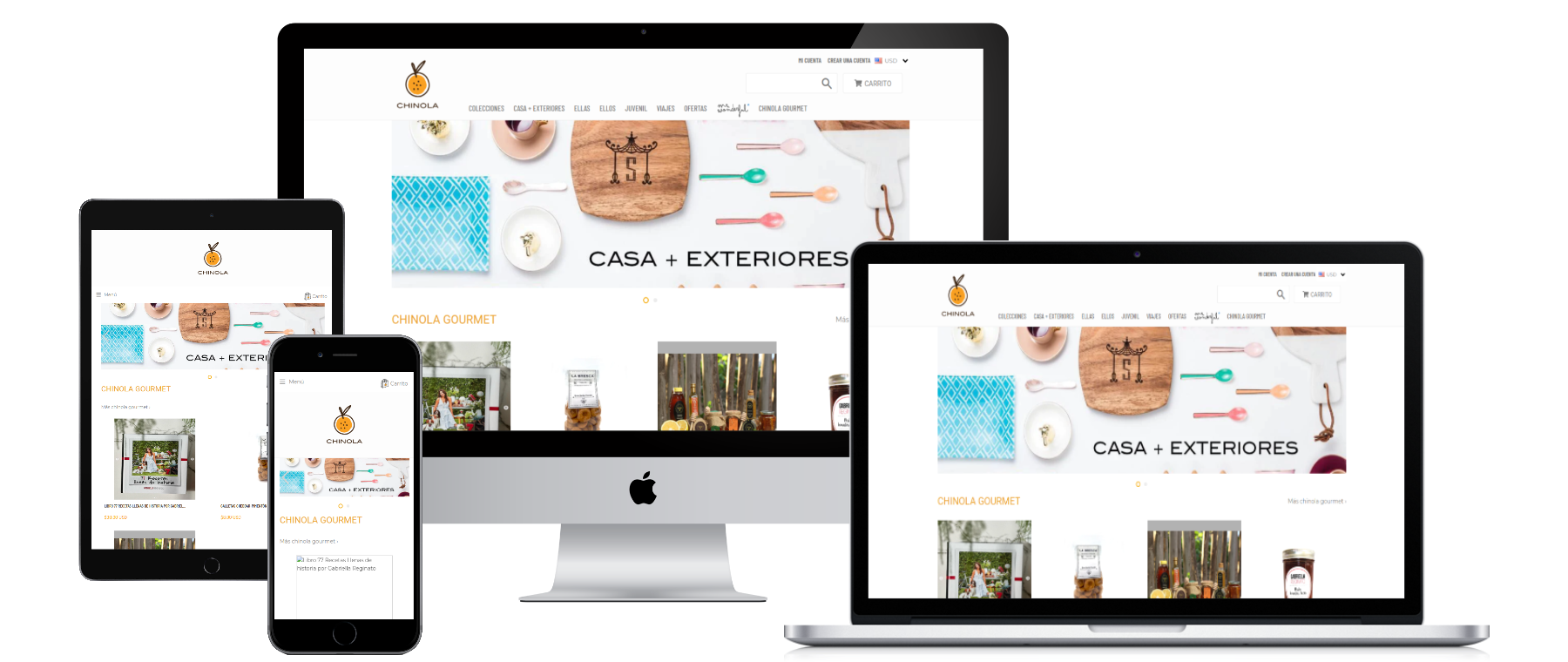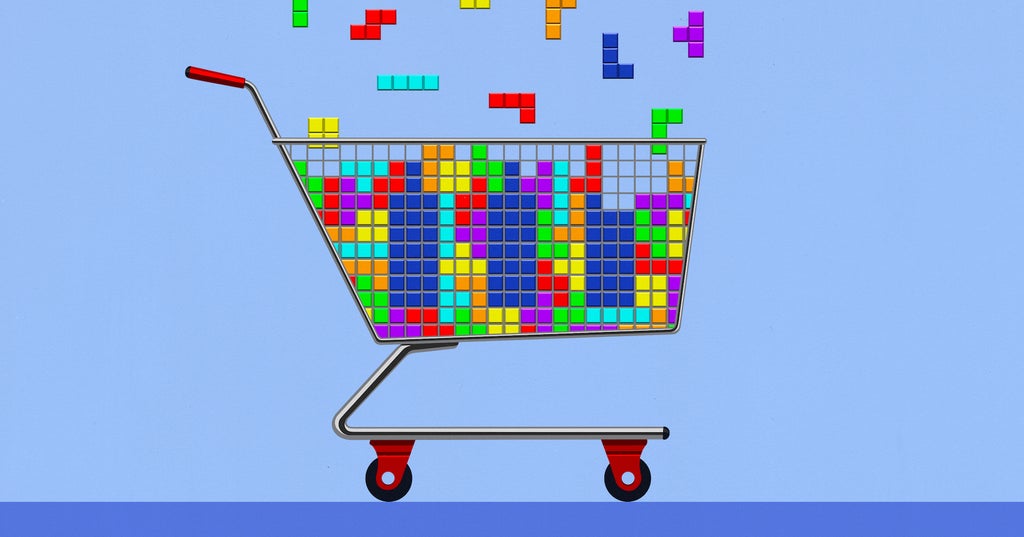
11 Real Ways to Make Money Online
The past year encouraged all of us to embrace the great indoors. No surprise, then, that the interest in making money online from the safety of our homes is now on the rise.
What once felt like a distant daydream is now a reality for millions of people. Those of us who worked remotely from our home offices for the last few years have a lot less explaining to do at family events—the path to earning a meaningful amount of money online has become much clearer.
The magic of the internet is that it’s a sales channel, marketing network, and community hub all in one—plus so much more. There are many creative ways to make money online beyond online surveys and selling used goods on Craigslist.
That said, some businesses and side hustles are better suited to the laptop lifestyle than others. In this guide, we’ll break down the strengths and shortcomings of a few of the top money-making options.
11 best ways to make money online
To make choosing the best ways to make money online easier, we’ll look at several key factors:
- Business type: whether the idea is product based, service based or driven by an audience.
- Effort: how much time, skill, or experience you’ll need to put into the idea.
- Leverage: how well positioned you are to turn the idea into a money-making one that increases in value without needing your direct attention. A high-leverage idea isn’t a 1:1 trade of time for money.
- Startup costs: the upfront budget you’ll likely need to launch the idea.
1. Dropshipping
Business type: Product based
Effort: Medium
Leverage: High
Startup costs (out of 5 💸): 💸
Last year, many worldwide trends experienced a decades’ worth of acceleration. One such trend was the rise of ecommerce. There are a number of ways to run an ecommerce business, some of which allow for minimal need to carry and hold lots of inventory.
Enter dropshipping. Dropshipping is a business model where you don’t keep the products you sell in stock. Instead, when a customer buys something from your store, a third party fulfills and ships the order for you. Because low startup costs are low, it’s an increasingly popular way to make money online for beginners and pros alike.
Dropshippers have a habit of chasing the latest trends. And while there’s nothing wrong with catching a trending product wave, know that there also are many product categories that are steady and offer similar opportunities to do well. At Shopify, we regularly see these categories in our list top performers:
- Women’s clothing and accessories. Far and away the most popular category of products on Oberlo. There are a variety of interesting niches within this category, too, including dresses, accessories, intimates, hoodies, socks and hoseries, and rompers. Since these products have a large market, are purchased relatively frequently, and are successfully sold through great marketing, they’re consistently a top performer for dropshipping.
- Jewelry. If you want to turn jewelry into a profitable small business, dropshipping is a good model to try. You can sell in a variety of categories, including fine jewelry, fashion or costume, and collectibles. Or sell jewelry made from different materials, like gems, wood, textile, or metals.
- Home and garden. Home and garden is one of those dropshipping niches that seem to always be trendy. People are always looking to add personal touches to their space to make it feel warm and cozy, which can make this an exciting (and profitable) niche to sell in.
- Beauty. The beauty and personal care market is projected to be worth $511.4 billion by the end of 2021. Beauty is a thriving industry fueled by younger generations entering the market and is strengthened by social media and ecommerce. You also have options in the beauty niche: you can sell cosmetics, skin care, personal care, hair care, fragrances, and more.
OK, sounds good. But there is a huge hurdle to overcome with dropshipping: you’re selling an existing product. The ease of starting a dropshipping business also means you’ll be up to your knees in competition—so it relies heavily on customer support. That means you’re giving up a really important piece of leverage and need to recognize that, in order to succeed, you’re going to have to outcompete the competition with a well-chosen niche and creative marketing.
Subtle Asian Treats is a top dropshipping store that sells cute plushies and cases for AirPods and iPhones. It was founded by Tze Hing Chan, a young Malaysian entrepreneur, to take advantage of the bubble tea craze happening in Asia.
Tze explains in an interview with Oberlo, “I knew that the bubble tea trend was up and coming, especially in Asian communities, so I looked around for bubble tea stuff on AliExpress. I found phone cases, and that was my very first product.”
Tze spent months exploring and selling different dropshipping products; some earned him extra cash, while others flopped. It wasn’t until he found the bubble tea plushie that his dream store became a reality. Once he saw them, he immediately imported them to his Shopify store, ran Facebook ads, and watched customers start rolling in.
2. Print on demand
Business type: Product based
Effort: Medium
Leverage: Medium
Startup costs (out of 5 💸): 💸
Print on demand allows sellers to customize white label products with their own designs and sell them only after a customer buys, eliminating the need to hold inventory (which is what makes it a subset of dropshipping). When a customer views the t shirt mockup, places an order, a print-on-demand company will add your design to the product, fulfill the order, and ship it to the customer.
The most significant advantage print on demand offers over dropshipping is that you have control over the aesthetic of your products—a key differentiator for product categories where the design is the distinguisher, like t-shirts or fan merch.
When it comes to making money online, you can also use print-on-demand services to:
- Test online business ideas or new products lines without the risk of buying inventory
- Monetize an audience you’ve already built, whether it’s on YouTube, social media, or a personal blog
- Offer diverse products by selling t-shirts, books, shoes, bags, mugs, phone cases, laptop skins, wall art, and more
- Sell photos online by placing your images on physical products to sell to your fans
Overall, print on demand lets you create customized products quickly. You don’t have to worry about shipping or fulfillment—it’s taken care of by your suppliers. And since you have no inventory to worry about, it’s a low risk, low investment way to make money online
3. Business type: Product based
Effort: High
Leverage: Medium
Startup costs (out of 5 💸): 💸💸💸
While the options above come bundled with the convenience of not holding on to expensive inventory, they do come with some limitations—mainly that you don’t have full control over the product you’re selling.
And when you think of most direct-to-consumer brands, this is what comes to mind: original products that make meaningful improvements or add interesting details to well-known items. Personally, I’ve purchased many messenger bags, but I’d never seen anything like the one made by Vermilyea Pelle until it reached my doorstep.
Making products by hand is popular amongst jewelry brands, fashion brands, and home decor brands. It gives you full control over the product development and quality of your items. The only drawbacks are: (1) it can be time consuming, and (2) it’s difficult to scale. The costs associated with making products by hand are the cost of materials, storing your finished products, and labor.
That said, a custom product doesn’t have to be completely handmade. There are many ways to find a manufacturer or supplier to help bring your product to life. For example, you could:
- Use domestic or overseas manufacturers. If you have a unique product that you don’t want to make by hand, you could find a manufacturer to make your products. The Alibaba route is a common way to do this. You can use the marketplace to find potential manufacturers, communicate your vision to them, and get your products made. This will require some upfront investment because of minimum order quantities and storage, but it’s a good way to maintain control of your products while keeping cost per unit low.
- Resell wholesale items. Buying and reselling wholesale items is a straightforward, low-risk way to make money online. You buy products you want direct from manufacturers, usually brands that are already credible on the market, at a discounted rate, then sell them in your online store at a higher price.
It’s important to understand these methods to make the right choices when creating and selling custom products. Each has its own advantages and drawbacks, which you can read about in Make, Manufacture, Wholesale or Dropship: The Pros and Cons of Each Model.
4. Sell on Etsy
Business type: Product based
Effort: High
Leverage: Medium
Startup costs (out of 5 💸): 💸💸💸
Every online marketplace, from Etsy to Amazon, offers a shared set of advantages and disadvantages. The upside is that you get access to their network of shoppers—people regularly browse these sites when they need to buy something, so setting up shop lets you meet them there.
That said, since these channels can work in harmony with your own website, sometimes they’re a great place to begin. New online makers can use Etsy to grow brand awareness at first. They have an active buyer community of 45.7 million buyers. We’ve seen many businesses successfully switch to Shopify after generating their first few sales on Etsy, for example.
The benefits of creating your own Shopify store include:
- You can manage the look and feel of your store. Your Etsy shop sticks to one design model with less room for creativity.
- You can grow your product line. Etsy sellers are limited to selling handmade, vintage, or artisan products. Say you want to offer a complementary manufactured product that could create a better customer experience and boost average order value. You may not be able to on Etsy. Having a Shopify store helps serve your customers better and add new products, no matter if they are dropshipped, manufactured, or wholesale.
- Easier inventory management. Ecommerce platforms like Shopify provider full inventory management and analytics so you can keep your records in order and make smarter decisions for your business.
If you have an Etsy shop and don’t want to leave just yet, you can always run both stores simultaneously. Once you set up your Shopify store, use a free Shopify app like Etsy Integration: Sync and Sell. You can easily sync inventories, manage orders, and make money online using both Shopify and Etsy.
5. Sell on Amazon
Business type: Product based
Effort: Medium
Leverage: Medium
Startup costs (out of 5 💸): 💸💸
Amazon has become a marketplace that welcomes new ecommerce entrepreneurs. It takes a few minutes to sign up for an account and a few more minutes to get a product listing live.
The platform has a massive audience, it’s a global marketplace, and it’s a go-to destination for product discovery and research. Listing optimization can help your products get found and unlock new opportunities. And Amazon’s in-app promotions can increase your brand's visibility for highly targeted audiences.
Yet, some ecommerce entrepreneurs question the long-term sustainability of selling on Amazon. While the marketplace is great for helping shoppers surface desired products, it’s challenging for sellers to get their business noticed. Amazon attracts many resellers of the same products you may offer. Tack on fees and trying to differentiate your brand and you may end up working harder to generate sales but not grow your bottom line revenue.
While selling on Amazon is a good way to make money from home, there are some caveats to consider:
- Amazon sets the rules for its marketplace. We know Amazon is a leader in collecting and using customer data to create better shopping experiences, but that information doesn’t get shared with you. If you compete head to head with a product owned by Amazon, it’ll be hard to make sales. Amazon Retail tends to get the Buy Box advantage.
- Amazon prefers sellers to use Fulfillment by Amazon (FBA). FBA is Amazon’s fulfillment program offered to sellers. Once you put a product in its fulfillment centers and a customer orders it, Amazon will fulfill the order. You must use FBA to be eligible for Amazon Prime and Amazon Super Saver Shipping, two ways to help retailers improve conversion rates and earn extra money.
- Amazon owns the customer relationship. Sellers cannot add Amazon customers to a CRM or re-market to them after the sale.
That said, Amazon is a great additional sales channel for your Shopify business. Similar to Etsy, you can use Amazon to get your products in front of a built-in audience, get discovered, and use your ecommerce website as the main sales channel. You can even integrate Shopify with Amazon to manage listings and sync inventory faster and easier.
6. Digital products
Business type: Product based
Effort: High
Leverage: High
Startup costs (out of 5 💸): 💸💸💸
Digital products carry some of the best margins of any product you can sell. The upfront costs of development can be high, but the variable costs of selling digital products is comparatively low. Once media or software is made, it isn’t very expensive to deliver to customers.
At its core, a digital product is an intangible asset you can sell repeatedly without restocking an inventory. They often come in downloadable files such as a PDF, plug-in, or interactive document. These products have become such a good source of passive income that many top professional influencers, bloggers, or public icons release digital products such as guides, ebooks, templates, research findings, plans, and tutorials.
Some key benefits of selling digital products are:
- They’re scalable. There’s no limit to how many products you can sell. No inventory. No manufacturers. No shipping or logistics. Just market the products. When a customer purchases a digital product, it’s delivered instantly without your help.
- Low overhead costs, high profit margins. Since there’s no recurring cost of goods or shipping charges, you keep a majority of the profit for each sale.
- E-learning is becoming more popular. The e-learning industry is expected to reach $325 billion by 2025. Digital products are a smart way to take advantage of this trend and expand your business.
Digital products can be a great supplement to your main income. Many creators make them to add another revenue stream to their businesses, whether it be consulting, education, memberships, etc. You could build a presence on Twitter and LinkedIn or build an email subscriber list to promote your products to and make sales.
Since the barrier is so low when selling digital products, it doesn’t require much upfront investment or risk. The best care scenario is you sell 10,000 templates. The worst case is that few people buy and you lose a few hours of time.
7. Media
Business type: Product based
Effort: High
Leverage: High
Startup costs (out of 5 💸): 💸💸
Media is a very wide-ranging term, but the best description available if you’re a creator in the market to sell music, videos, digital art, paid newsletter, magazines, or podcasts.
Media seems closely related to digital products, but the difference with media is that it tends to be geared toward creative ventures—for example, a writer starting a paid newsletter subscription or an artist learning how to sell art online.
The best part about selling media is that, a lot of the time, it’s a way for people to express themselves online. Artists and creators who didn’t have access to networks, galleries, or PR in the past can now build a brand, grow a following, and make money online doing something they love.
Harry Hambley, the cartoonist behind the successful brand, encourages creators to follow their dreams as an artist. In an interview with BBC, he describes turning down university to draw cartoons online. He tells BBC, “You should always do whatever you feel inspired by.”
When it comes to creating media for the public, Harry explains how “doing something complicated doesn’t guarantee success. It’s more about having a solid idea and then being able to communicate it easily.”
In a world where negativity is widespread online, the Ketnipz brand is a positive light. It reflects Henry’s goals to give off a good vibe and be “something that’s quite comforting.”
8. Blogging
Business type: Audience monetization
Effort: High
Leverage: Medium
Startup costs (out of 5 💸): 💸
You’ve probably read a business blog at some point in your life. Businesses use blogging to share knowledge and insights, build an audience, and get more leads and sales. Blogging has endless benefits, such as building thought leadership in an industry and improving search engine visibility for a brand.
Blogging to make money online has grown beyond big businesses and side hustles. Anyone can now build an audience by putting out great content and make a lot of money from their blog. Bloggers also tend to take a personal approach that resonates with an intended audience versus getting information from a company blog.
People start blogs for many different reasons, some being:
- Sharing their thoughts, passions, or life experiences
- Educating readers on a topic they know about
- Selling products or services
- Building a personal brand
The key to running a successful blog is choosing a niche. There’s really no shortage of them on the internet. You could be the expert on topics in a specific location (for example, restaurants in Toronto) or for a specific segment in certain categories (like vegan keto recipes and lifestyle). Focusing on a niche helps you speak to an audience and create high quality content for them, which in turn can result in leads and sales for your blogging business.
But how do you make money from blogging? Well, once you learn how to start a blog, you can monetize it a few different ways:
- Selling physical products that your readers would enjoy, like pillows or t-shirts
- Offering digital products such as designs, digital art, courses, templates, or photography that you can make once and sell repeatedly
- Selling freelance services such as consulting, writing, bookkeeping, or other hobbies that make money
- Becoming an influencer and doing paid promotions for brands
- Selling subscriptions or memberships to exclusive content on platforms such as Patreon
While blogging is a low investment business idea, it can take time to pay off. Chances are, you won’t find yourself on page 1 of Google’s search results overnight. But with the right niche and determination, you’ll be well on your way to making money online through your blog.
9. Affiliate marketing
Business type: Audience monetization
Effort: Medium
Leverage: High
Startup costs (out of 5 💸): 💸💸
There seems to be a trend with online-only business models still being relatively misunderstood. Well, add affiliate marketing to that pile. There’s no snake oil to be found here.
So, how does monetization work through this model? Essentially, publishers or individuals can apply for affiliate programs, wherever they’re available, in order to be added as an official affiliate. Once you’re accepted (or simply approved), you’ll receive a way to share an affiliate link to the product or service you’re interested in promoting.
When someone buys the product after clicking your link, you’ll receive credit for the referral, along with a commission. The commission amount depends on the affiliate program and the product being sold—commodity items on Amazon.com won’t pay out much, but referring a high-ticket account may pay out hundreds or even thousands of dollars.
Because affiliate marketing works best when you help a visitor understand why a certain product may be the right one for them, you’ll typically see it deployed on content-focused websites. Search engine optimization also plays an important role here and you’ll see everyone from homegrown sites to massive, globally known publications competing for terms like “best gaming laptops 2021.”
Niche-to-win applies here, too. Since you don’t have a masthead of 50 writers, you won’t outcompete with professional publications like Wirecutter as a general review site. You may, however, be able to write, rank, and differentiate yourself by covering all things terrariums or high-intensity interval training. Point being, it’s typically easier to land (pick a distinct niche) and expand (grow into new areas) than it is to compete with a general interest site, especially when you’re getting started.
The best affiliate content helps the reader both solve a problem or make a decision and showcases the right products as part of that solution.
10. Online courses and workshops
Business type: Product based
Effort: High
Leverage: High
Startup costs (out of 5 💸): 💸
Creating a truly great online course is tough. You need to know the ins and outs of a specific subject and then have the skill (and dedication) to codify that knowledge and either write or record your best advice for customers. And, of course, you need to successfully market the course once it’s made—often the most difficult part of all.
There’s a reason online courses have a pretty broad appeal, though. Once a course is created, it accrues all of the benefits of any digital product: the costs to deliver the product to more customers is essentially zero, with the exception of hosting. Compare that to the need to maintain inventory that all physical product businesses face and you’ll find yourself dealing with fewer product-related headaches as you scale.
The appetite for digital courses and continuing education is there, too. Your biggest hurdle is actually the web itself, where there are thousands of wonderful resources available for free. And content on every topic is getting better by the day.
But the seemingly unlimited options available on the web is precisely why paid courses are valuable: they filter out the fluff and just share the good stuff. Many creators have found success turning their mostly free videos or blog posts into a paid course. The reason people pay isn’t just for the information, but for the way it’s organized and presented. Part of the value is the time saved not having to filter through dozens of YouTube videos and random websites and to instead get one cohesive course from an engaging instructor.
Remember, though, that while there are a countless number of topics to create content about, there are far fewer topics that people are willing to pay for. Usually, the bestselling courses teach people a valuable skill that helps them make progress at their job or get deeper enjoyment out of a beloved hobby. That explains why courses on Microsoft Excel can become bestsellers.
Once again, it’s often best to go to a market where people are willing to spend. Professionals probably spend the most money on courses, so if there’s a way for you to take the things you know from work and package them in a course, you already have your biggest selling point: help your buyers get a raise or promoted. Help them be better at the skill creating their main source of income.



